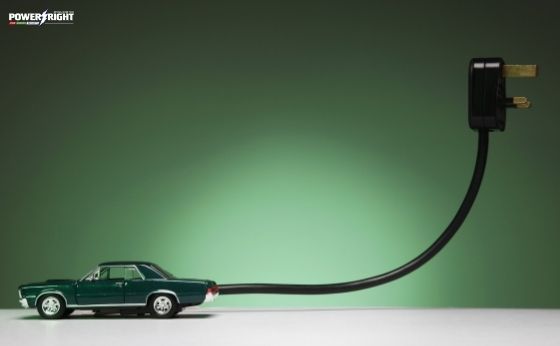
Electric vehicles are getting more and more popular these days: they are eco-friendly, and the running cost is much cheaper compared to conventional cars. EV charging point network is expanding, so that you can charge your car not only at home, in your garage, but also at a public station or at work. Nevertheless, you have to take into consideration a simple fact that the connecting cable has to match both your vehicle and the EV charging station outlet. In other words, the EV plug type has to be just right on both ends.
There are four types of EV connectors, two for each type of the current.
AC, or alternating current, allows you to charge your vehicle up to to 43 kW. Every EV is equipped with slow AC EV chargers. They can be plugged directly into the car with one end, and with the other end being plugged into any standard 120V outlet.
There are two EV connector types here:
This one is standard for American and Asian Evs. The charging power can be up to 7.4 kW. It is used in such vehicles as Nissan Leaf, Opel Ampera, Nissan ENV200, Peugeot iON, Mitsubishi Outlander etc.
This type is considered the European standard. It is mounted on, for example, Renault Zoe, BYD E6, BMW i3, i8, Tesla Model S, Volvo V60 plug-in hybrid etc. This EV plug type is triple-phase, so it charges your car faster. The highest charging power rate is about 22 kW, and public EV charging points can charge at the rate up to 43 kW.
DC, or direct current, provides much faster speed – up to 350 kW.
This fast-charging system (up to 100 kW) was designed in Japan. Most of the Asian car manufacturers offer electric vehicles that are compatible with this EV plug type. It is used in such electric vehicles as Mitsubishi Outlander, KIA SOUL EV, Mitsubishi iMiev, and Nissan Leaf etc.
CCS, or The Combined Charging System, allows high-power DC charging. It is a combined connector using a type 2 AC connector and a DC connector. The maximum power in AC is from 43 kW to 100 kW, in DC mode, it operates at the power of up to 350 kW. Such manufacturers as Ford, BMW, General Motors, Hyundai, Honda, Kia, Mazda, Renault, Volkswagen Group and Tesla support this system.
It is a 480-volt fast-charging technology designed by Tesla so that its vehicles can get fully charged within just an hour. Models S and X can be charged for free if purchased before January 2017. Otherwise, the fee is about € 0.40 per minute.
Occasionally you may need to charge your electric vehicle on the go. Even though nowadays there are quite a few EV charging stations available, there is still something to consider. There are four main EV plug types: Type 1, Type 2 (for AC) and CHAdeMo and CCS (DC). Type 1 is an American standard; Type 2 fits most European and Asian cars from 2018 and later. CHAdeMO is more common in Asian vehicles and allows fast charging. CCS is a much faster version of Type 2 connector with two additional power contacts.
In Europe, the standard EV charger is type 2, so most EV charging stations have a type 2 outlet. You have to be aware of the fact that some of the EV charging points have a fixed cord. Remember to check if the attached cable is compatible with your electric car's socket in case you decide to charge your vehicle at a public charging station.